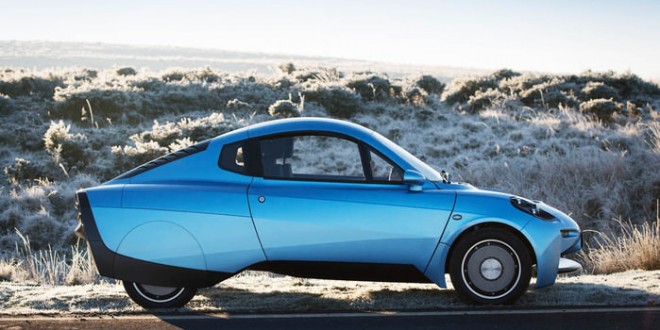Riversimple unveiled The Rasa which is a two-seater vehicle and gives the equivalent of ‘250 miles to the gallon’. The car is said to have the lowest carbon emissions for any vehicle ‘well-to-wheel’ with water as its only output.
This first car is a two seater ‘network electric’ car, powered by a hydrogen fuel cell. The engineering prototype has clocked over 60mph and has been weaving neatly through the traffic in London, as well as gliding down the country lanes of Powys.
The chassis is a carbon fibre monocoque made from very lightweight but extremely stiff carbon fibre composites. The monocoque chassis weighs less than 40kg.
The engineering prototype weighs 580 kg. It embodies various key features:
Four electric motors, one in each wheel
Motors as brakes – recovering over 50% of kinetic energy when braking
Super-capacitors to store this energy and provide most of the power for acceleration
A low powered hydrogen fuel cell ( 8.5 kW)
A body made of lightweight composites
It’s the synthesis of all these technologies that delivers the groundbreaking efficiency and range, many times better than inserting fuel cells into conventional, heavy, vehicles. The production prototype should do c.250 mpg (equivalent), with a range of 300 miles. Emissions are zero at tailpipe and c.40gCO2/km Well-to-Wheel – even if the hydrogen comes from natural gas.
HOW DOES IT WORK?
The hydrogen passes through a Proton Exchange Membrane in the fuel cell where it combines with oxygen to form water and electricity. The electricity then flows to the motors in each wheel. These motors are small, lightweight and give the car 4 wheel drive.
When the car brakes, the kinetic energy, that is normally lost in the form of heat, is captured as electricity. As the car slows, this electricity floods into a bank of super-capacitors at the front of the car. Unlike a battery, these super-capacitors can take a huge charge very quickly, but they don’t store a lot of energy. The energy they take in is sent back to the motors again and provides the energy to accelerate.
Agencies/Canadajournal

 Canada Journal – News of the World Articles and videos to bring you the biggest Canadian news stories from across the country every day
Canada Journal – News of the World Articles and videos to bring you the biggest Canadian news stories from across the country every day

